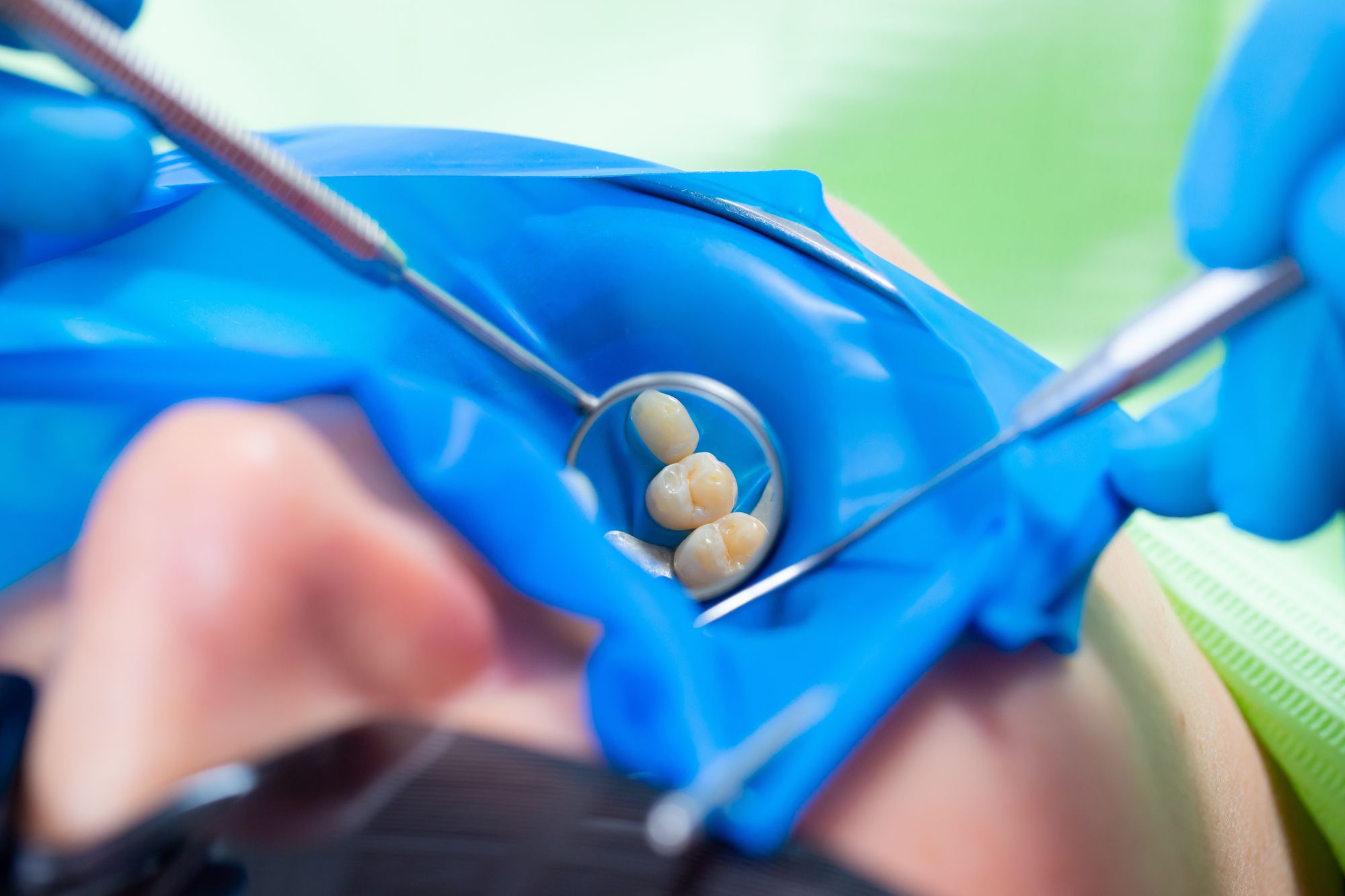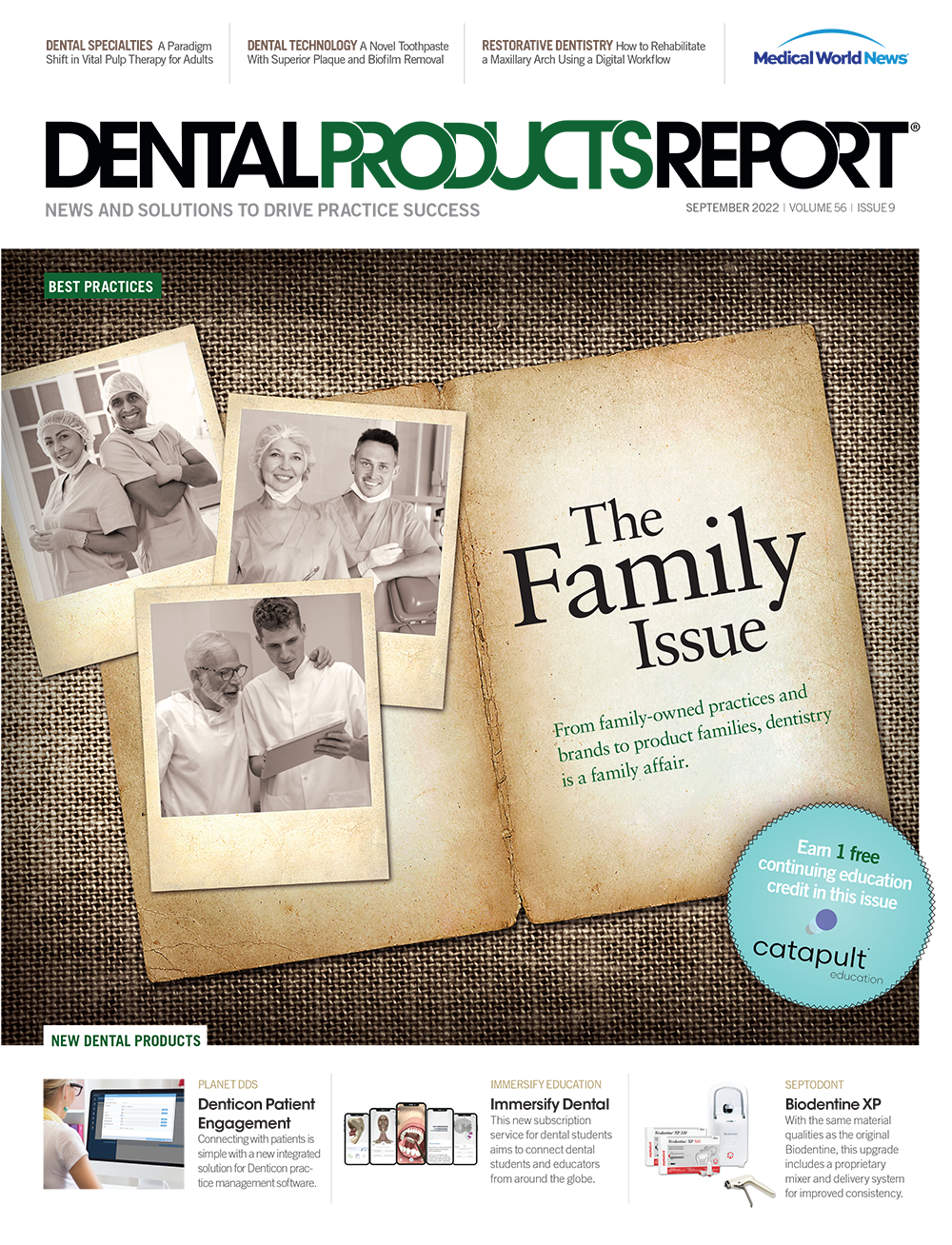These Go to 11: How to Get Your Composite Restorations to Last Longer
Research estimates the average lifetime of a composite restoration to be 7 to 10 years. Here's how to get yours to go to 11.
These Go to 11: How to Get Your Composite Restorations to Last Longer.
Photo courtesy of Dmitry/stock.adobe.com.

Research suggests that the average lifetime of a composite restoration is around 7 to 10 years. We look at why composite restorations replaced other longer-lasting restorative materials, what research suggests about composite’s longevity, the 7 common problems that compromise restorative longevity, and what you can to ensure that your restorations last longer.
Composite resin restorations are popular with clinicians and patients alike for their esthetic properties. Clinicians also like the clinical advantages that composite presents, like bonding to enamel, which allows for less tooth structure removal required for the preps. Also, there is evidence that composite restored molars are more robust than amalgam restored ones. And, of course, let's not forget that amalgam has a mercury component that dentists worry about putting in the patient's mouth.1
However, amalgam's advantage over composite resin is that its restorations tend to last longer. A 2010 study estimates that some amalgam restorations under proper clinical care can survive 70 years.1
Composite resin, on the other hand, has a range of three to ten years from various studies. In 2011, another study from the Japanese Dental Science Review suggests that 60 percent of composite resin restorations last ten years or more "when proper materials are applied correctly."3
The South African Dental Journal is more optimistic about the longevity of composite resin materials. While they say that early dental composite resin failure rates were as high as 50% after 10 years, the rate has improved with microfills, nanofills, and micro/nanohybrid materials with a filler range of 42 to 55%. Moreover, the annual failure rate was only 1.5 to 2% for hybrid composites, and those failures were attributed to fractures.3
So, with all the clinical and esthetic benefits available, why don't composite restorations last as long as other types? Research suggests that many factors—patient-, operator-, material-, and tooth-related—influence these restorations' longevity. The patient-related areas were the age and caries risk of the person. The operator-related areas affecting longevity were experience and skill and the clinician's criteria for replacing restorations. Material-related factors included the adhesive and material type and the placement technique. Tooth-related influences on longevity were the amount of tooth surface to restore and the tooth type.
Peter Auster, DMD, a private-practice clinician in Pomona, New York, and frequent lecturer for the dental industry, agrees with these areas of influence on dental composite restorations' longevity. However, he gets a little more specific, providing 7 factors and what to do about them:
7 Factors That Compromise the Longevity of Composite Restorations
- Saliva Contamination: As one of the significant issues, Saliva contamination can reduce bond strength by 90%, per Dr Auster.
- Occlusion Issues: Whether an unresolved problem with how the teeth come together or using materials that are inadequate to withstand bite forces, occlusion issues can reduce the life of the restoration.
- Polymerization Rate: Dr Auster says the laws of chemistry dictate that polymerization shrinkage will always fall in the range of 2-4% percent.
- Incorrect Prep Design: The materials in use and the function you restore have specific requirements to optimize the life of the restoration; flubbing these in the prep design shortens that survival timeline.
- Using Direct Materials in Wide Areas: The restorations have a reduced lifespan if the finished area is wider than the material can handle.
- Improper Curing: Clinicians will get the best performance when they achieve the proper cure of the material.
- Poor Contacts: Restorations without adequate contacts can trap food, inviting bacteria to collect there and initiate recurrent decay.
Let's take a closer look at each of these problems and how to get your composite restorations go to 11—and beyond.
Problem #1: Saliva Contamination
Dr Auster says 1 of the ways to optimize isolation and prevent saliva contamination is using a rubber dam. However, few dentists use rubber dams for composite restorations.
"The number of dentists in the US using a rubber dam for restorations is probably lower than 15%, Dr Auster says. "There are other options, like Optradam (Ivoclar), the Umbrella (Ultradent), DryShield, IsoDry, or IsoLite (Zyris, Inc.) and they help to a degree."
Problem #2: Occlusion Issues
Many dentists simply check the bite in maximal intercuspation (MI). Auster says that's only half the job. He recommends testing the bite with 2 colors after placement, 1 for the bite and 1 for lateral excursions. Dr Auster explains that adjusting the bite in lateral excursions is essential because excursive interferences can cause composite restorations to sustain major damage. Dr Auster instructs patients to chew in all directions to test excursions as accurately as possible.
"Many patients don't understand being told to bite and then slide," Dr Auster says. "So, I reached the point where I just tell them to chew in all directions."
Problem #3: Polymerization Shrinkage
You cannot do much about the 2-4% shrinkage inherent in the polymerization process. However, there are some things you can do to mitigate it, Dr Auster says. Heating composite before you place it is 1 thing that can help. Another option is to add a small amount of flowable composite underneath the more viscous material to act as a shock absorber for the restorative material. Some material’s science also suggests that adding unsilinated glass fibers to the material can minimize the shrinkage of the material.
"You prevent the shrinkage from reaching the maximum amount because the fibers act to hold it together and lessen shrinking," Dr Auster explains.
Problem #4: Incorrect Prep Design
Prep design is significant in restorative dentistry. Many considerations exist, ranging from prep location to the material chosen to the restorative work needed. Most clinicians are experienced in this area and get the broad strokes of prep design. However, Dr Auster thinks that 1 detail should be reviewed: sharp edges.
"Avoid any sharp edges in preps. Instead, all preparation margins should be rounded when placing composites," Dr Auster says.
Problem #5: Using Direct Materials in Wide Areas
Class II restorations are a significant part of a clinician's daily practice. Most dentists have a system for treating Class IIs that is both efficient and effective. The problem occurs when the Class II span is too large to be restored with direct composite. Dr Auster says these restorations have a shorter lifespan, estimated at 2-6 years, much lower than the average composite restoration in posterior teeth. Dr Auster recommends switching to indirect restorations, such as a crown or onlay, for Class IIs that are more than 60% of the tooth.
Problem #6: Improper Curing
Dr Auster thinks that many dentists finish restorative work as rapidly as possible to improve the patient's experience and maximize productivity. He says that 2-millimeter layers of material are the most reliable cure you can get. However, many clinicians trust their curing light to cure the bottom portion of much thicker layers. In many cases, that is not possible.
One way to combat this problem is to use a powerful curing light. However, Dr Auster says that is not always what clinicians are using these days.
"Part of the problem is that too many dentists are buying very inexpensive lights they can find on the Internet," Dr Auster says, adding that there is a reason better albeit more expensive lights are available. "One of the reasons is that more powerful curing lights can reach the bottom of the proximal box and cure the material."
Dr Auster likes some of the new lights on the market to correct the improper curing issue. For example, Dr Auster likes the Monet Laser Curing Light (AMD Lasers), the Pink Wave, the Valo Grand (Ultradent) and the Bluephase PowerCure (Ivoclar).
Problem #7: Poor Contacts
Dr Auster says that poor contacts can be attributed to the matrix used. He likes the sectional matrixes that will recreate natural contacts. Tofflemire matrixes only create a single point contact with composites. Moreover, these old-style matrixes were intended for amalgam Class II restorations, not composite.
"It's time to stop using them," Dr Auster says.
In addition to all these practical tips, material selection is another essential part of maximizing the longevity of your restorations. Dr Auster suggests using the highest quality products, not necessarily the best-marketed ones.
"Use highly rated materials that work and have minimal shrinkage," Dr Auster says. "And don't skip steps."
Reference
Chan K, Mai Y, Kim H, Tong K, Ng D, Hsiao J. Review: Resin Composite Filling. www.ncbi.nlm.nih.gov. https://www.ncbi.nlm.nih.gov/pmc/articles/PMC5513465/pdf/materials-03-01228.pdf. Published 2010. Accessed May 26, 2022.
Kubo, S. (2011). Longevity of resin composite restorations. Japanese Dental Science Review. 47. 10.1016/j.jdsr.2010.05.002. Published 2011. Accessed May 26, 2022.
Fernandes, NA, Vally, Zi, & Sykes, LM. The longevity of restorations -A literature review. South African Dental Journal, 70(9), 410-413. http://www.scielo.org.za/scielo.php?script=sci_arttext&pid=S0011-85162015000900008&lng=en&tlng=en. Published 2015. Accessed May 26, 2022

Product Bites – November 10, 2023
November 10th 2023The weekly new products podcast from Dental Products Report is back. With a quick look at all of the newest dental product launches, Product Bites makes sure you don't miss the next innovation for your practice. This week's Product Bites podcast features new launches from Amann Girrbach, DMG, Pac-Dent, and ASI Dental Specialties. [4 Minutes]
ACTIVA BioACTIVE Bulk Flow Marks Pulpdent’s First Major Product Release in 4 Years
December 12th 2024Next-generation bulk-fill dental restorative raises the standard of care for bulk-fill procedures by providing natural remineralization support, while also overcoming current bulk-fill limitations.
Product Bites – October 27, 2023
October 27th 2023Product Bites makes sure you don't miss the next innovation for your practice. This week's Product Bites podcast features new launches from Kerr Dental, MGF, PreXion, ZimVie, Amann Girrbach, VOCO, ASI Dental Specialties, DMG, and NovoDynamics. [8 Minutes]